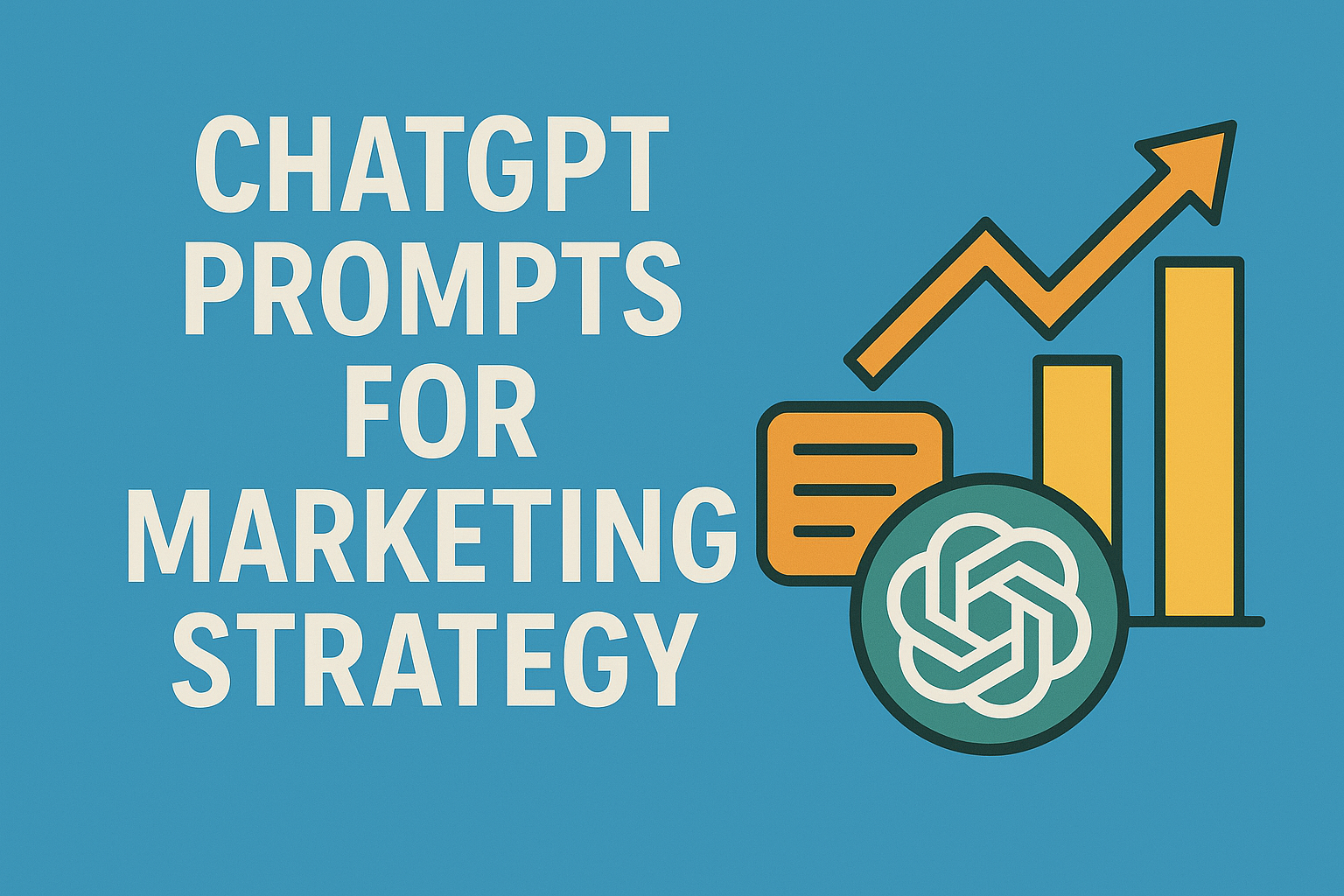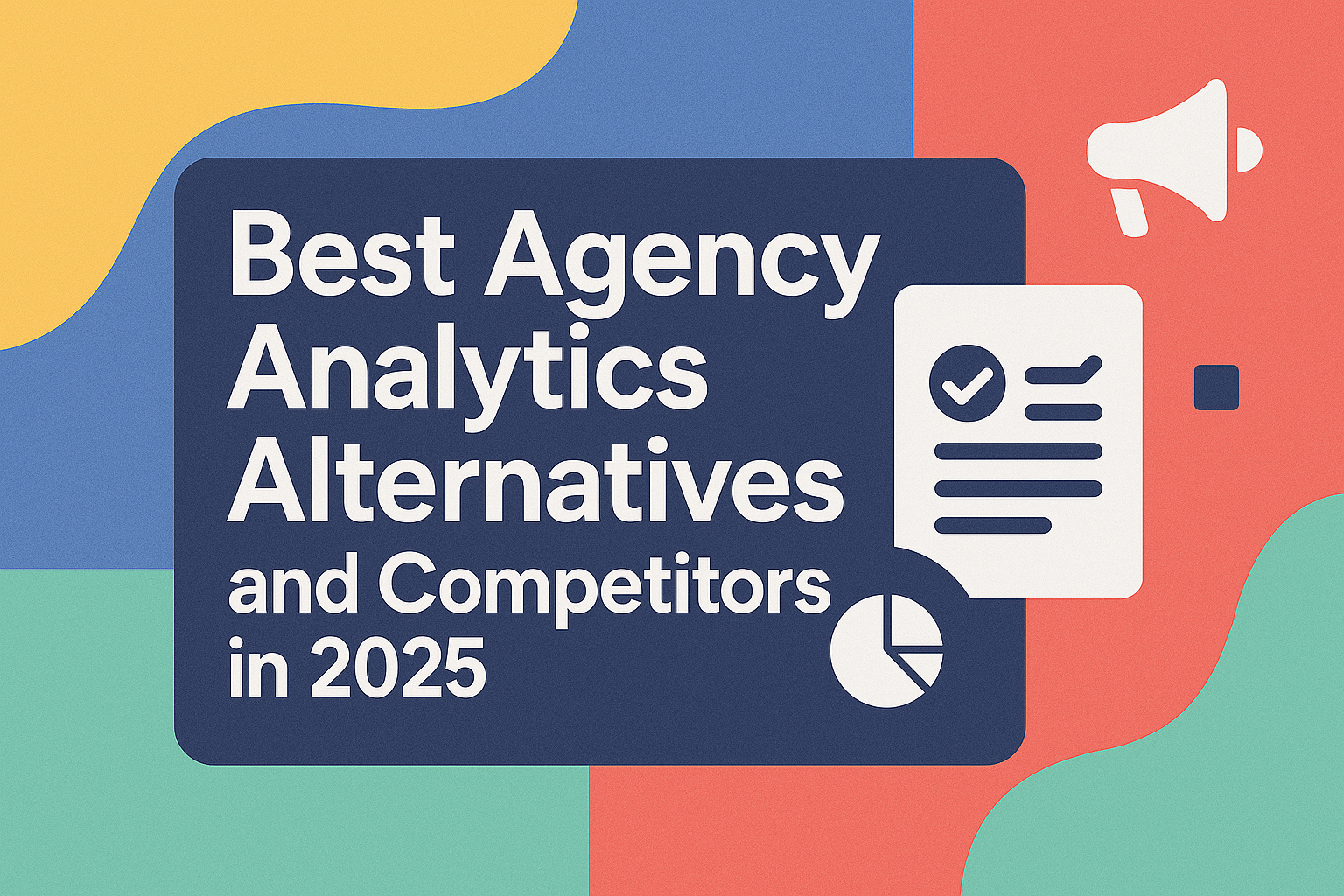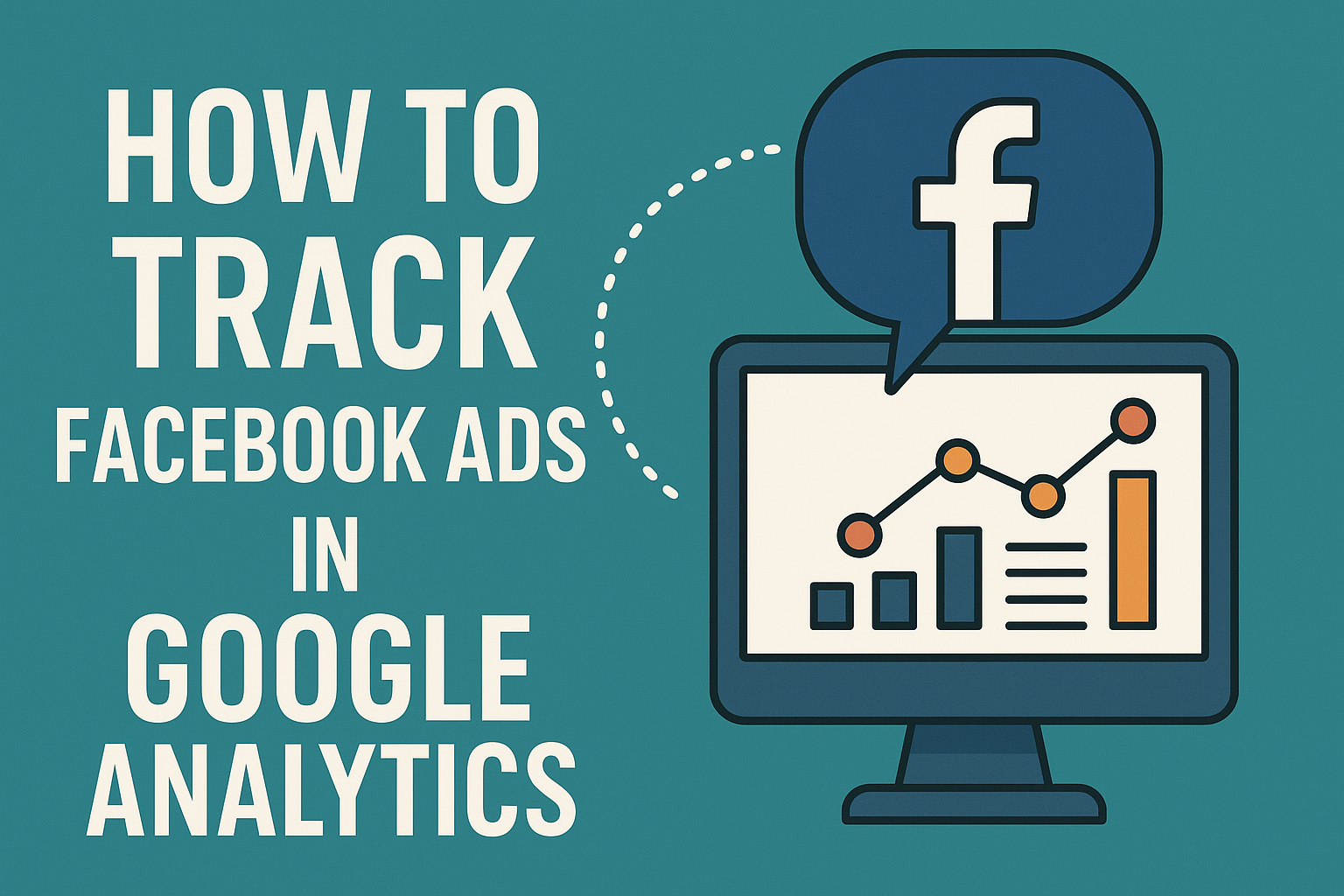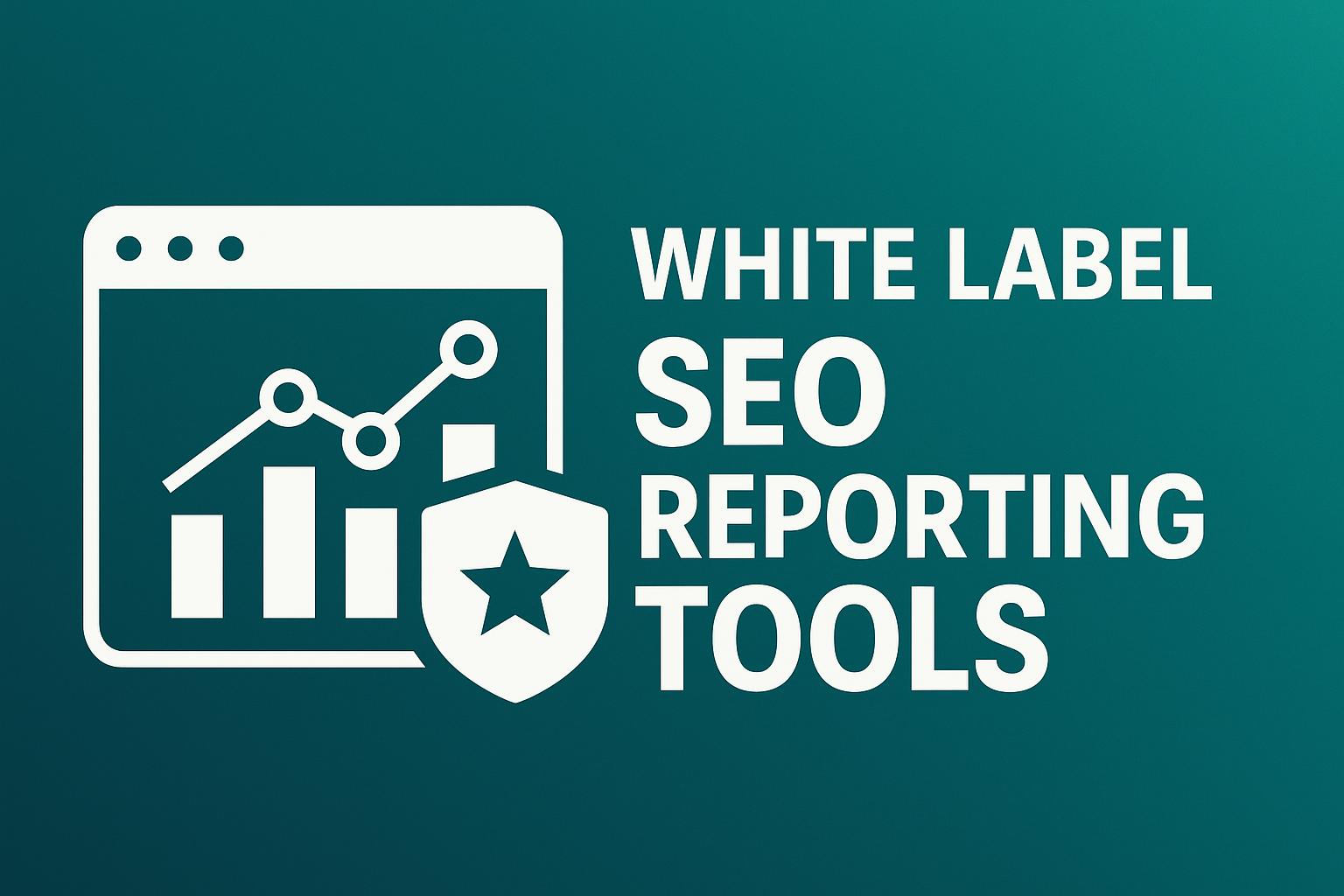ChatGPT Prompts for Marketing Strategy (with Free Prompts & Tips)
Key Takeaways
- Here are some advanced ChatGPT prompts that can help marketers gain deeper insights, create engaging content, and align messaging with strategic goals.
- Adding empathy, storytelling, and conversational language to prompts results in better audience relationships and more impactful campaigns.
- By establishing specific marketing goals and continually updating prompts, you keep AI-driven content focused and practical.
- By leveraging ChatGPT for market research, audience personas, and competitive analysis, you can better plan and make decisions for your global marketing strategy.
- Sweeping workflows and multiplatform reach, AI-powered prompts applied to content creation, SEO, and distribution.
- Ethical concerns such as transparency, authenticity, and data privacy should remain a priority when incorporating AI into marketing strategies in order to establish and maintain consumer trust.
ChatGPT prompts for marketing strategy are short, specific instructions you provide to ChatGPT to assist in planning, evaluating, or crafting your marketing strategy.
Teams use them to generate fresh ideas, outline campaigns, or dissect hard problems. They save time, reduce guesswork, and increase collaboration.
This cheat sheet reads useful prompt examples and advice for teams seeking more from their marketing tools and AI chatbots.
Beyond Basic Prompting
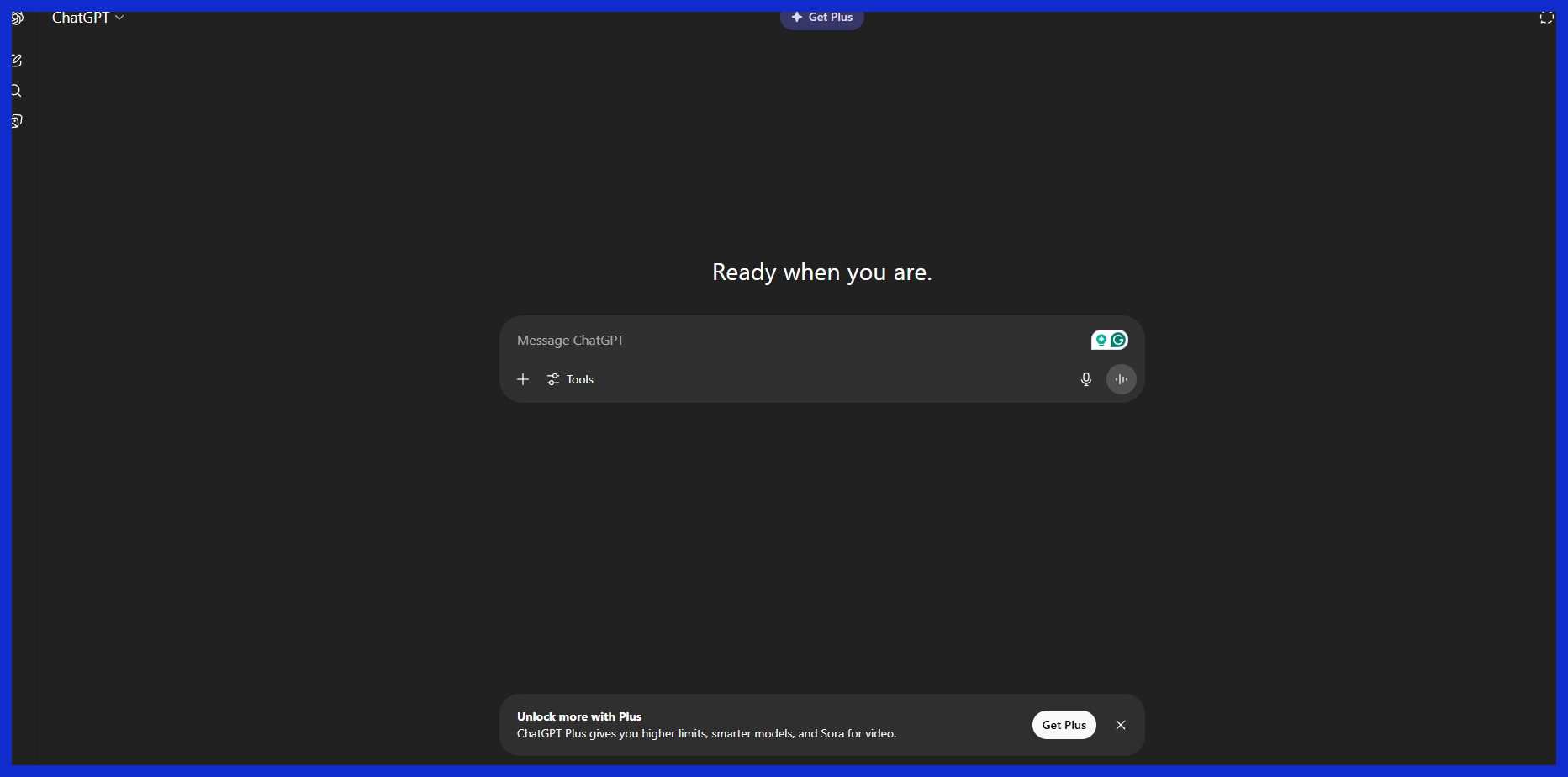
Advanced ChatGPT prompts transcend basic commands and enable marketers to access deeper insights, generate more relevant content, and mold AI output to match genuine marketing objectives.
With clear context, creative scaffolding, and humanized elements built in, prompts can go well beyond just text generation. They can reinforce brand voice, increase campaign resonance, and help teams differentiate themselves in crowded spaces.
The Human Touch
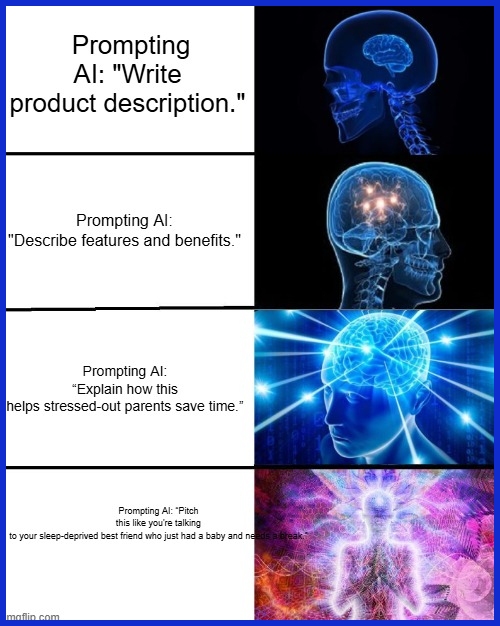
Compassionate prompting makes marketing messages sound more real. Requesting AI to “compose a welcome note that comforts jittery first-time users” can steer it towards warmer, more empathetic language.
Customer psychology is what matters. Prompts such as ‘explain why this product solves common pain points for busy parents’ keep the AI focused on actual needs.
Storytelling puts a level of connection on it. For instance, ‘write a short case study about a customer who used our service to save time’ steers you towards content that’s actionable and human.
Prompt with plain, colloquial language—e.g., ‘pitch this deal as if you’re talking to a buddy’—to make AI copy sound more organic and less formulaic.
Strategic Context
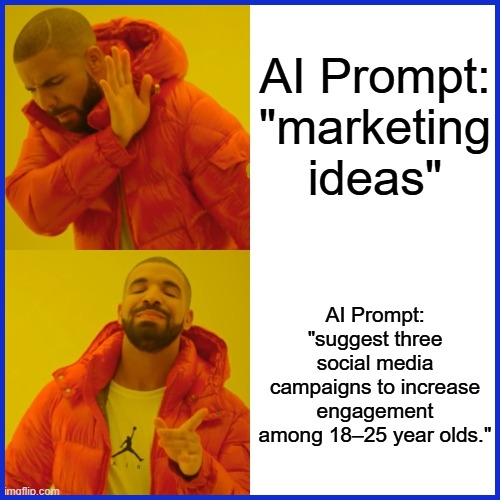
Specific objectives in prompts maintain AI responses on track. For example, instead of requesting ‘marketing ideas,’ say ‘suggest three social media campaigns to increase engagement among 18–25 year olds.’ This level of specificity keeps AI answers on target.
Aligning prompts with tactics is helpful. Say you’re planning a product launch; something like “list 5 ways to promote a new app on Instagram, using current trends” can be effective.
Anchoring your prompts with frameworks — e.g. Sketch out a content plan that addresses awareness, consideration, and decision” — provides structure to the AI’s output. Including market trends, such as “think about recent changes in green consumerism,” guarantees relevance.
Iterative Refinement
Trialing prompt mutations exposes what works. Try different wordings, more detail, or a different emphasis to find what yields the most clear, most helpful response.
Use follow-up questions or merged prompts to broaden and refine the output. Your team’s feedback helps identify holes or ambiguities.
Marketers could then customize prompts to align with brand voice or campaign objectives. Examining AI answers for truthfulness and precision facilitates prompt refinement.
Recording every modification, even minor adjustments, enables teams to discover what leads to improved performance and creates a database of successful prompts for later incorporation.
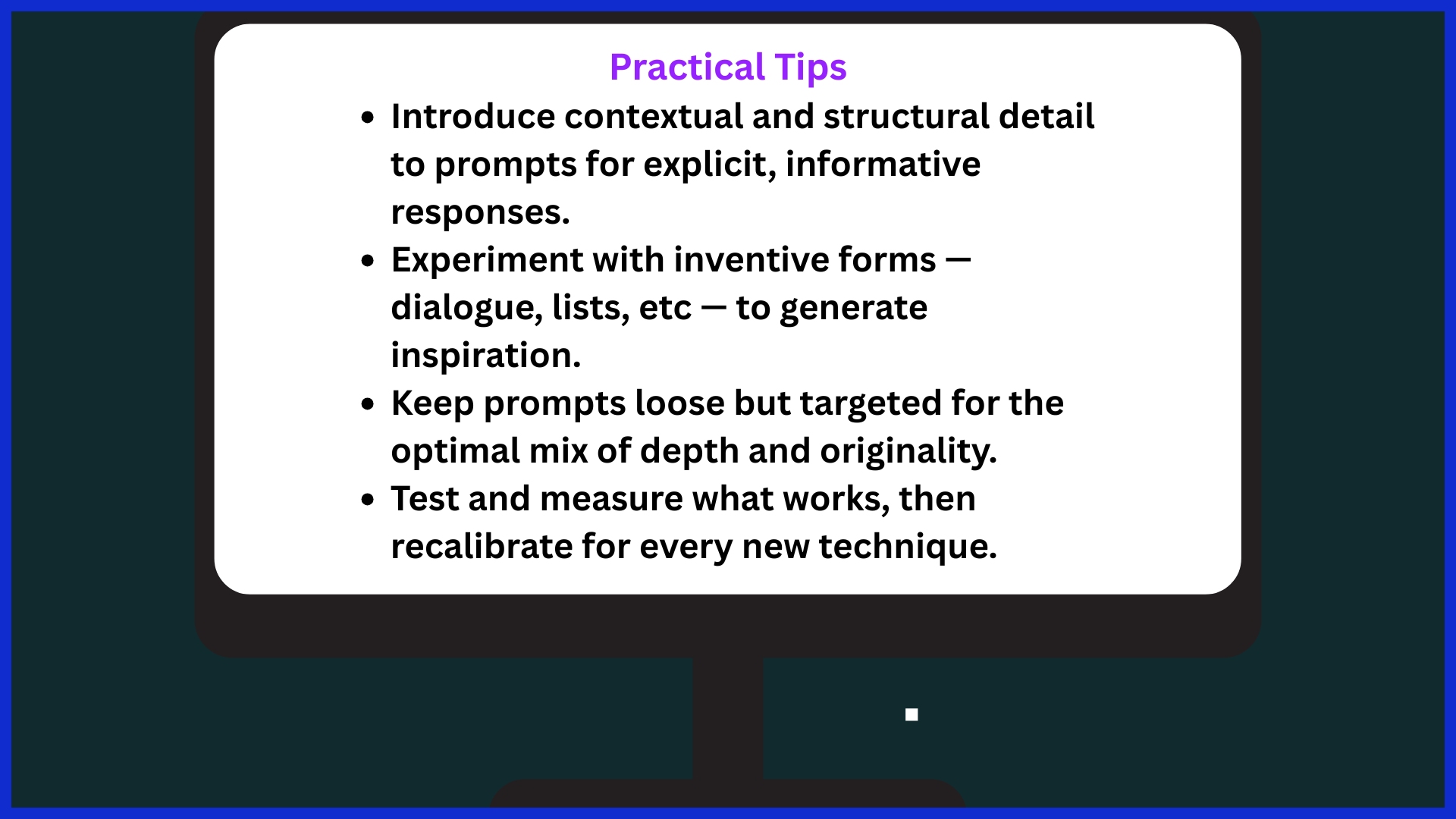
Crafting Your Marketing Strategy

A smart marketing strategy ensures you have clear objectives, reach the right target audience, and monitor what’s effective. Utilizing AI tools like ChatGPT can enhance your marketing plan by reducing research time and boosting the effectiveness of your social media campaigns.
Below is a breakdown of the main pieces to include:
-
Make goals clear and track them. Managers who do so tend to be more effective.
-
Leverage AI to research markets and discover what your customers desire and require.
-
Build audience personas to target your efforts.
-
Look at your competitors to see where you stand.
-
Develop a consistent brand voice.
-
Make your core message simple and easy to share.
-
Use a content calendar for regular updates.
-
Measure results with key numbers such as ROI so you understand what works.
-
Be willing to revise your strategy as markets evolve.
1. Market Research
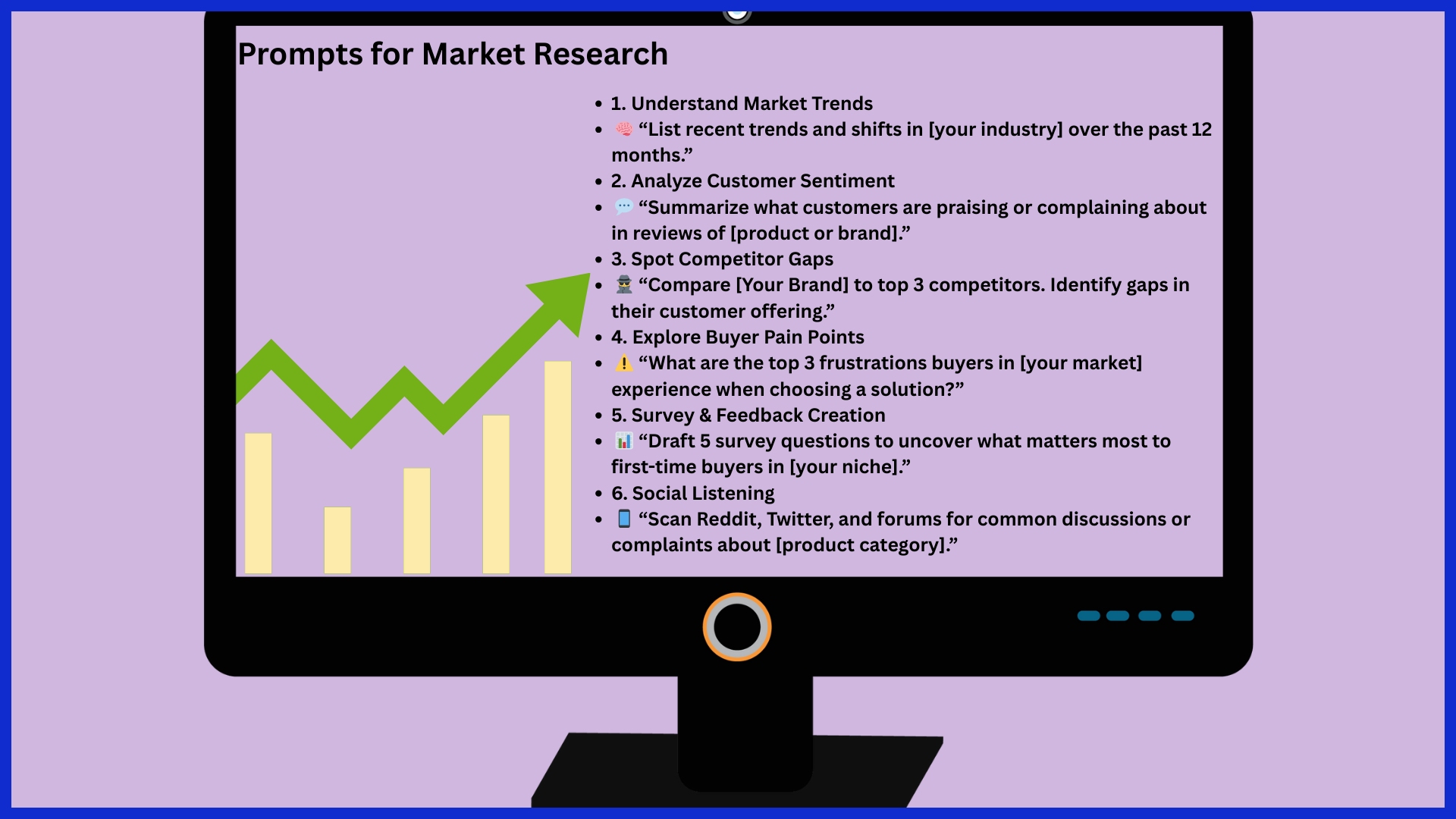
AI helps identify trends and what people please. You might prompt ChatGPT to enumerate the recent market changes in your space, or to aggregate customer reviews across multiple sites. This enables you to observe what is important to your customers.
You can leverage ChatGPT to research your competitors. It can scan press releases, social media, or news articles to identify gaps you can fill. AI-powered prompts assist you in creating surveys or polls for instant feedback, sparing you days of effort.
To dig deeper, prompts can help uncover pain points, such as “What are the top three challenges facing buyers in this market today?” This creates an authentic foundation for your strategy.
2. Audience Personas
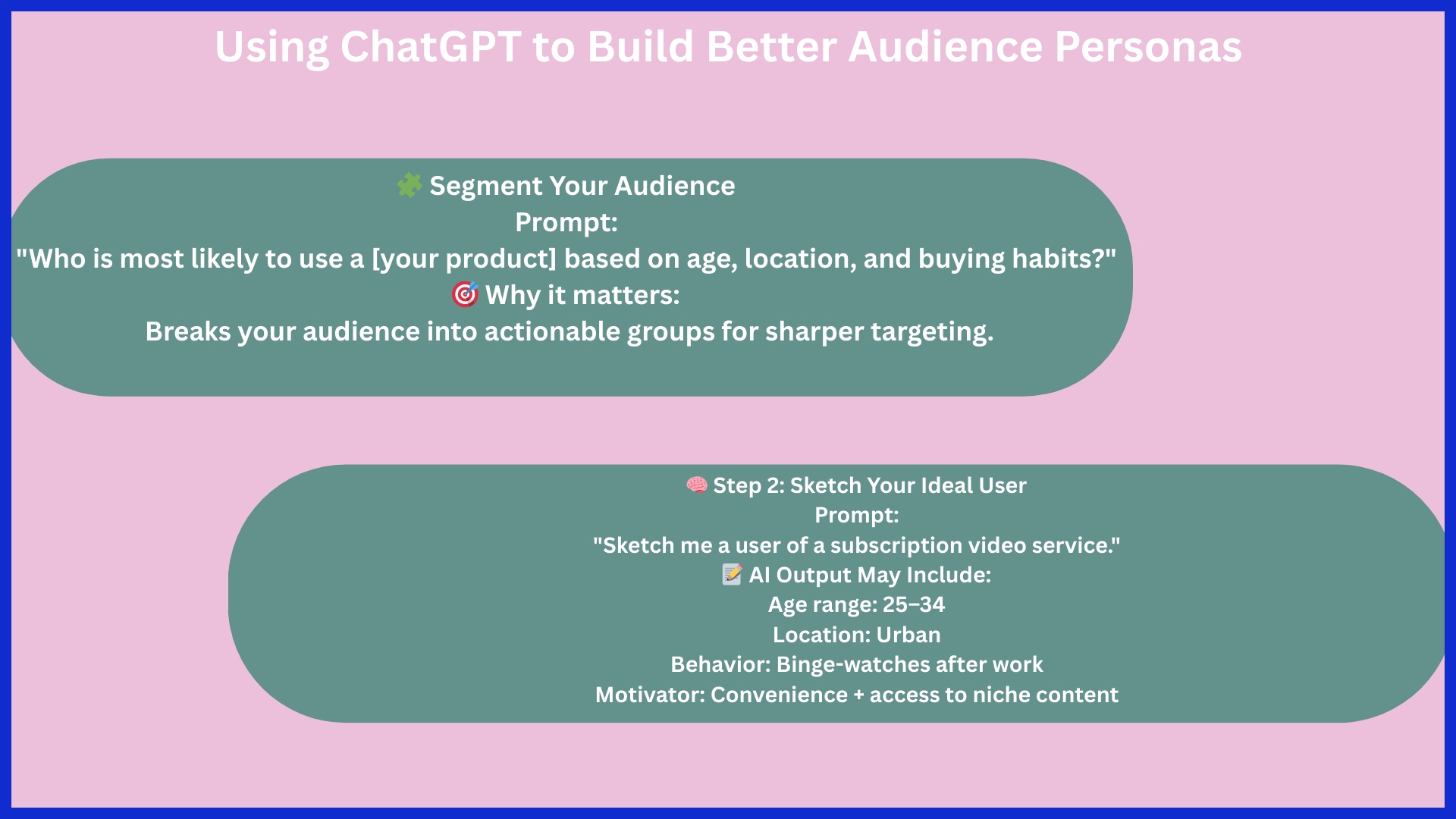
Begin with questions that segment your audience by age, location, or purchase behavior. ChatGPT can assist you in outlining who’s most likely to require your product, for example, “Sketch me a user of a subscription video service.” This defines your targeting.
AI can assist you in enumerating characteristics and preferences that distinguish your perfect customer. Query incentives or what drives them to purchase, and then leverage these responses to inform your messaging.
As additional data arrives, refresh your personas. This keeps your focus crisp and your campaigns on course.
3. Competitive Analysis
ChatGPT can outline your strengths and weaknesses versus a competitor in an easy-to-read table or summary. It can analyze how competitors advertise, what they post, and which things work best.
It’s practical for uncovering your points of difference, e.g., “Identify three differences between our product and the number one competitor.” By seeing what and how others publish and how it performs, you can plan your content calendar and plug holes in the market.
4. Brand Voice
Prompts assist you with expressing your values and voice in plain text. You could say, ’What’s a friendly, helpful type of brand?’ ChatGPT can provide samples for web pages, emails, or social media.
Over time, you can adjust these prompts according to what works and your audience preferences. Set prompts help keep your voice consistent across channels.
5. Core Messaging
Prompts can help craft your headline message so it aligns with your brand mission. Attempt: ‘Write a tagline for a community-driven fitness brand.’ AI can present various perspectives for addressing different audiences.
Keep testing and let feedback and results help you refine your message. This guarantees your campaigns resonate and your brand remains top of mind.
Fueling Content Creation
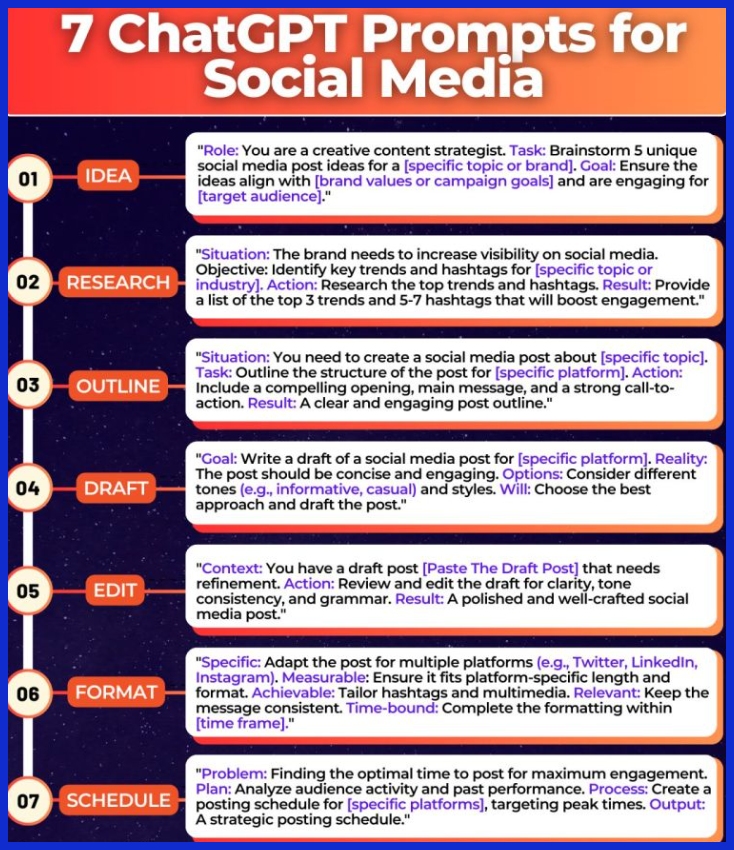
Fueling content creation is more than stringing words on a page. It’s about arming teams with the right combination of insights, research, and technology to craft content that cuts through. With roughly 77% of marketers leveraging AI in one form or another, ChatGPT prompts now help craft valuable blogs, social posts, videos, and emails.
Defined objectives, understanding your audience, and employing concise action verbs all aid creators in producing work that resonates. A serious content calendar makes all the difference — it establishes a cadence and a strategy. With more than 600 million blogs on the web, discovering your voice and angle is more vital than ever.
Blog Content
- “List five trending topics in sustainable tech for 2024.”
- “Write a beginner’s guide to SEO basics.”
- “Share expert opinions on remote work productivity.”
- “Compare top project management tools for agencies.”
- “Summarize research findings on mobile marketing trends.”
Writing, for example, on an outline prompt like ‘Outline a blog about AI tools for small business owners, focusing on real-world use cases and practical tips’ helps keep writing focused and relevant. ChatGPT can outline headings, bullet lists, and calls to action so the completed post is scannable.
Switch up your slant by requesting varying formats, such as case studies or thought leadership articles, to find what resonates with your readers. Iterative prompts like “Revise for clarity and add keywords for local SEO” help hone the final draft for readers and search engines alike.
Social Media
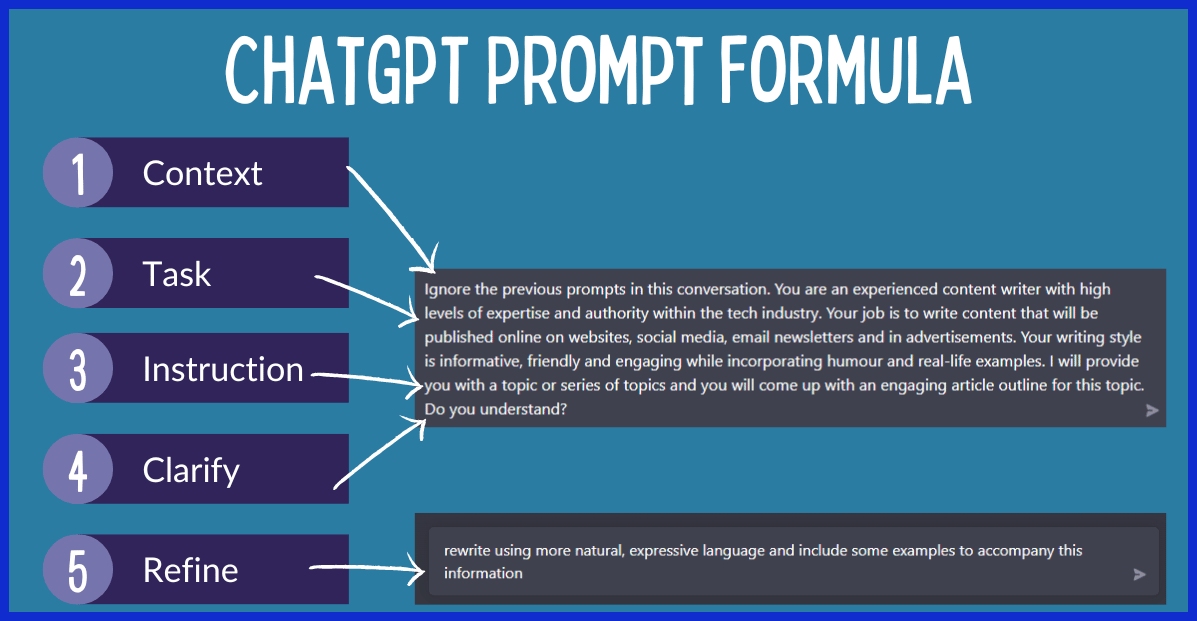
Prompts can ignite content ideas for each platform–e.g., “Recommend five Instagram carousel topics for sustainable living tips” or “Write a LinkedIn post on remote team management struggles.” This aids content-audience habit matching.
ChatGPT can construct a basic weekly calendar, connecting posts to campaign objectives, important dates, or product launches. With prompts such as ‘Write a poll question about favorite digital marketing tools’ or ‘Create a hashtag challenge for brand engagement,’ you’re driving interaction and building community.
By feeding back performance data — like share or comment — prompts can be refined to direct future campaigns.
Video Scripts
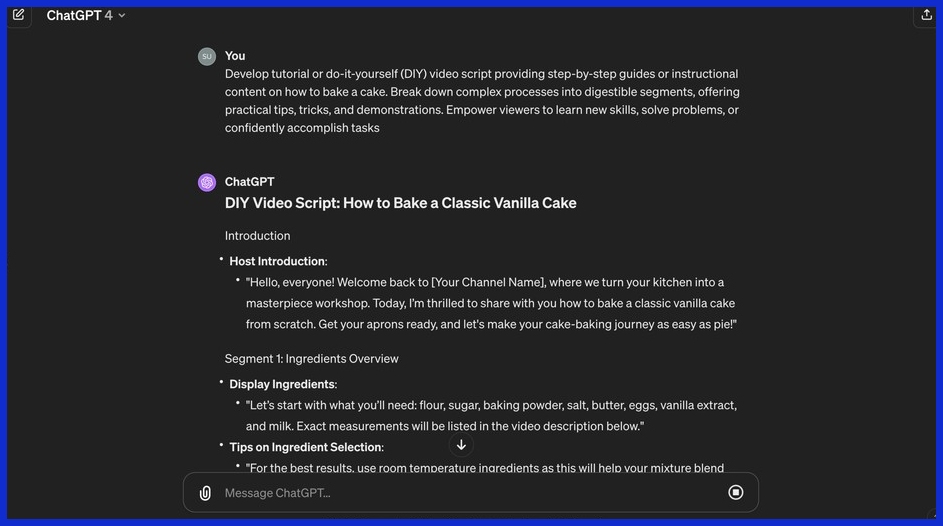
Prompts such as ‘Create a 60-second script introducing our newest app feature, with a call to action’ get right to the point and help teams move fast. A straightforward format—intro hook, important points, wrap-up message—maintains viewers’ interest throughout.
Storytelling prompts like “Write a customer success story for our YouTube channel” are valuable in the real world and keep attention longer. Studying audience response or watch rates informs the next batch of scripts.
Editing the script according to viewer drop-off points is a pragmatic approach.
Email Campaigns
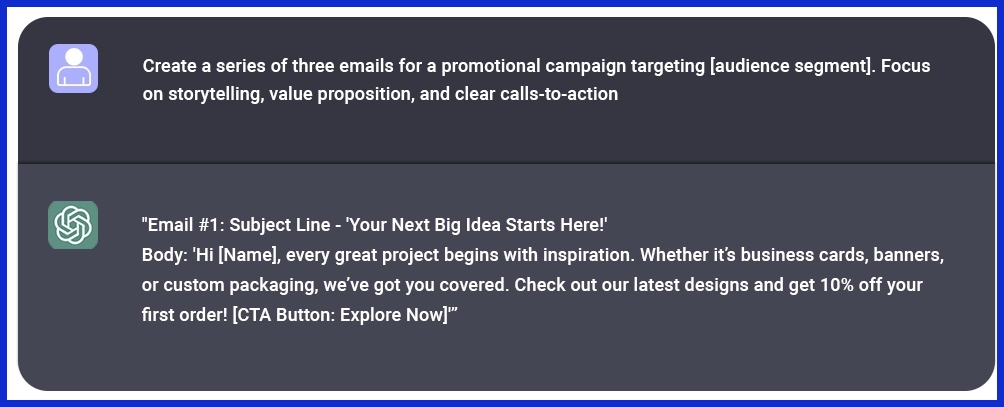
Prompts such as ‘Suggest three email campaign ideas for upselling to loyal customers’ enable teams to start with the right target in mind. ChatGPT can rapidly produce subject lines—“Save 20% on your next purchase”—and concise, unambiguous messages that compel action.
Segmenting prompts, such as “Write a follow-up email for a first-time buyer,” allows you to craft messaging by segment. Trying out different versions, like “Compare open rates for two subject lines,” helps teams discover what generates the best results.
Optimizing for Search

Search optimization is an iterative process, involving subtle, consistent tweaks to your site for improved rankings on search engine results pages. ChatGPT, as a conversational AI tool, assists with eliminating the guesswork from keyword research, on-page SEO, and effective marketing strategies.
Keyword Research
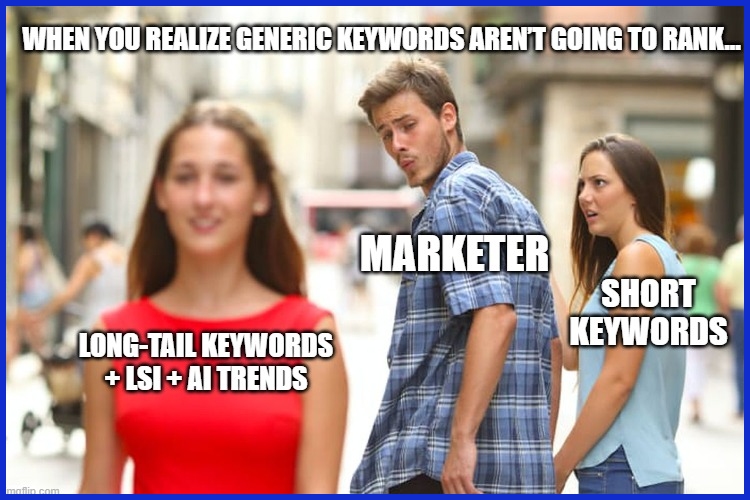
A strong keyword research process starts with a checklist: define your seed keyword, explore related topics, check search volume, analyze keyword competition, and list long-tail keyword ideas. Ensure every step is completed to avoid anything slipping through the cracks.
ChatGPT can analyze keyword competition and search volume. For instance, request a list of keywords in your industry, then have it compare difficulty scores or popularity for each. This aids in selecting which words to target.
Next, prompts can dig into long-tail keywords. These are longer phrases — such as “eco-friendly packaging for startups” — that attract visitors searching for something particular. They’re simpler to win and usually convert higher.
AI-powered insights like trending topics or LSI keywords complete your strategy. Use these tips to span sparser terrain, and keep your content fresh.
On-Page SEO
Good on-page SEO is more than just sprinkling some keywords around. Leverage with ChatGPT to construct prompts that request tangible action, e.g., “list 5 ways to make my article more readable for users and search engines.” This generates helpful pointers, from optimizing headlines to inserting pertinent internal links.
Test your current copy with AI by requesting pain points. For instance, ”take a look at this blog post and recommend where I should insert my primary keyword or LSI terms.” This highlights points for improved coordination.
Specific prompts assist with meta descriptions and title tags. Request attention-grabbing, snappy lines containing your phrase to increase CTRs on search results.
Keep tuning your pages. Employ ChatGPT to go through performance reports, recommend tweaks, and assist in addressing cannibalization issues, such as overlapping keywords across a few pages.
Content Distribution
AI prompts can outline a content distribution strategy. Begin with, ‘Which platforms are best for sharing B2B guides?’ This provides a list according to your audience and niche.
Study where your content catches on. Try prompts such as:
- “Compare engagement rates for my posts on LinkedIn vs Instagram.”
That way, you know where to spend your time.
Find new collaborations by entering,
- “Recommend influencers or brands in my niche to work with.”
This can result in broadcast reach and new audiences.
Monitor what works and adjust your strategy accordingly. Basic reminders will assist you in identifying what functions require additional focus.
The Ethics of AI Marketing
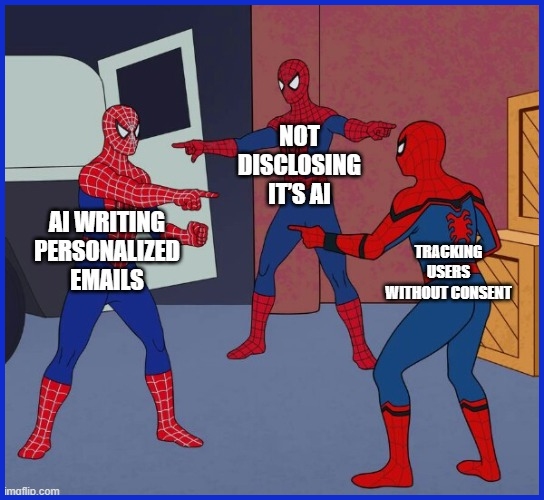
AI in marketing is transforming the way brands engage with audiences around the globe. Along with this power, a new series of ethical questions arise—how transparent should companies be, how authentic is their material, and what becomes of consumer data? As AI tools such as ChatGPT define marketing strategies, it’s crucial to adhere to ethical rules that safeguard individuals and foster confidence.
Key Ethical Guidelines for AI in Marketing:
- Be clear when content is AI-generated.
- Avoid prompts that exploit psychological or social vulnerabilities.
- Use data responsibly and respect privacy regulations.
- Seek feedback to improve transparency and authenticity.
- Ensure AI decisions are fair and unbiased.
- Align AI use with brand values and customer expectations.
- Update practices to match new rules and public concerns.
Transparency
Be clear when AI is used in your marketing. Prompts should request that ChatGPT disclose when text, recommendations, or insights are AI-generated. For instance, you could produce web content that states, ‘This section was assisted with the assistance of AI tools.’
This transparency educates consumers about AI involvement and mitigates the potential to deceive. There’s increasing worry that undisclosed AI content could undermine trust or even be used for deception, particularly if consumers aren’t able to distinguish between human and non-human creations.
Establishing trust includes being transparent about AI’s practices regarding user data. Employ prompts to assist in drafting transparent disclosures about how customer data is collected, stored, or analyzed. This can comfort privacy-concerned people, a big deal as data-first marketing expands.
Always seek input on whether your audience feels informed and tailor your communication to what they report.
Authenticity
Begin with prompts that request ChatGPT to maintain brand storytelling, authentic, and accessible. Authentic stories resonate most, so apply AI to collect and tell real customer stories and reviews, not canned copy.
For example, a prompt might be: Write a case study with actual user feedback. This keeps marketing real and allows people to see the human element within a brand.
Genuineness encompasses ensuring that AI-produced material aligns with your company’s tone and principles. If a prompt doesn’t fit your brand, customize and experiment until it does.
Experiment with various prompt types to discover which ones make your statement resonate as authentic and credible. This is important because AI marketing frequently runs the risk of coming across as templated or making brands feel less authentic, which can reduce long-term loyalty.
Data Privacy
Protecting data privacy comes first. Explicitly instruct ChatGPT to have ChatGPT compose transparent information about how personal data is gathered, utilized, and secured. For example: “Explain our privacy policy in plain language.
This type of message is essential for complying with global privacy frameworks like GDPR. Employ AI to generate content that informs customers of their rights, like opting out or deleting their data.
Remind them that you’re not selling or sharing their data. AI can assist in refreshing privacy notices as legislation evolves or new issues emerge. Keep refreshing privacy plans to align with the latest regulations and what your audience desires.
Measuring AI-Driven Success
AI-driven marketing success is all about selecting the right objective and understanding what metrics matter. It’s not clicks or sales anymore. AI changes the way teams view outcomes, as successes can come in the form of minor impact or major changes in customer actions.
Measuring requires straightforward data, but an easy means to reflect, learn, and iterate.
Key Metrics
|
Metric |
What It Shows |
Why It Matters |
|---|---|---|
|
ROI/ROAS |
Revenue from spend |
Shows profit from investment |
|
Customer Engagement |
Clicks, shares, time spent |
Reveals how people react |
|
Conversion Rate |
Actions taken |
Tracks campaign success |
|
Model Accuracy |
Correct predictions |
Checks AI output quality |
|
Precision/Recall |
Smart targeting |
Lowers waste, boosts results |
|
Satisfaction Score |
Customer feedback |
Finds issues, spots wins |
ChatGPT can help explain what these numbers mean. For instance, a prompt such as “Show me why customer engagement dropped last quarter” can bring up trends or missed signals.
Conversion and ROI-centric prompts enable teams to understand if AI tools provide a tangible impact or efficiency savings. Because AI has the potential to impact behavior, continue revising what you measure as your strategy evolves.
Testing Frameworks
A trial is the acid test for your AI concepts. Prompts can set up A/B tests, as in “Compare landing page A with page B for click-through rates.
ChatGPT can recommend experiments—perhaps experiment with varying ad copy, imagery, or even scheduling for social media posts. Once the test has run, prompts such as ‘Summarize the results of the last campaign test‘allow teams to analyze what worked, what didn’t, and why.
If the test discovers a new victor, adjust your plan. If not, try a new idea and test again.
Feedback Loops
Open feedback paths make AI tools smarter and teams sharper. Prompts like ‘Summarize recent customer feedback’ assist in identifying trends, whether positive or negative.
Let ChatGPT categorize comments, surface common pain points, or recommend minor patches. Weekly questions such as “What should the team be focused on this week?” keep everyone on point and help you continuously iterate your strategy.
Feedback systems must adapt to evolving customer needs, and prompts must change as well.
Refining with Data
Looking at numbers is only relevant if you act on your observations. Weekly campaign data check-ins with questions such as “What generated the most sales this month?” enable teams to identify opportunities to adjust AI applications or shift strategies.
Small, steady shifts tend to result in larger victories over time.
Conclusion
When used intelligently, ChatGPT can elevate your entire marketing strategy. Well-crafted prompts spark fresh ideas, fill out content calendars, and help you hit key SEO goals with less guesswork. Your team can move faster—whether it’s refining ad copy, improving blog posts, or shaping targeted campaigns.
Simple tweaks to your prompts can save hours and extend your reach. But remember, while AI tools like ChatGPT open new creative and strategic doors, they still require human oversight to ensure balance, accuracy, and brand integrity.
Let data guide you—analytics will show what’s working and where to pivot. The real advantage comes from a willingness to experiment, learn, and iterate. So why wait? Start testing new prompts in your next campaign, and watch the results unfold. It’s time for your team to take a bold step forward with AI-powered marketing.
Frequently Asked Questions
What are effective ChatGPT prompts for building a marketing strategy?
Good ChatGPT prompts are unambiguous and precise. For example, ‘Create a social media marketing plan for a new sustainable product aimed at millennials.’ This guarantees practical tips.
How can ChatGPT help with content creation for marketing?
ChatGPT can generate blog post ideas, social media marketing content, email marketing campaigns, and ad copy, making it a timesaver and a source of inspiration for brand-new content.
Can ChatGPT prompts improve SEO for marketing content?
Exactly, with marketing prompts such as ‘Suggest SEO keywords for a travel blog,’ ChatGPT can further suggest compelling content like meta descriptions and keyword-rich headlines.
Is it ethical to use AI like ChatGPT in marketing?
It’s ethical to use AI, such as ChatGPT marketing prompts, as long as you maintain transparency and avoid deception. Always proofread and curate AI-generated content for effective marketing strategies and user privacy.
How do you measure the success of AI-driven marketing strategies?
Track key metrics such as engagement, conversion rates, and website traffic to evaluate improvement and impact on your marketing campaigns.
Can beginners use ChatGPT for marketing strategy?
Sure, newbies can utilize effective marketing strategies by using ChatGPT for practical tips. This conversational AI tool offers step-by-step directions on audience research, content marketing inspiration, and social media campaign planning, accessible to any skill level.
What should I avoid when using ChatGPT for marketing?
Don’t provide sensitive information and don’t bank on AI output. Always double-check and personalize your marketing prompts to ensure they resonate with your target audience.

